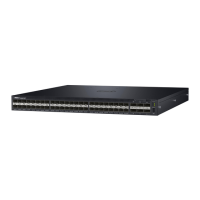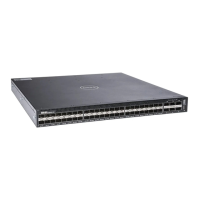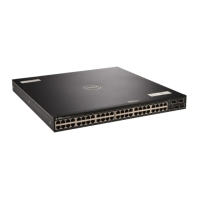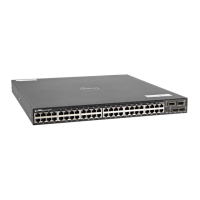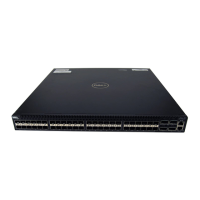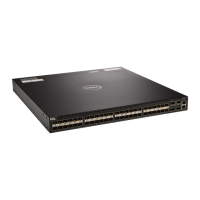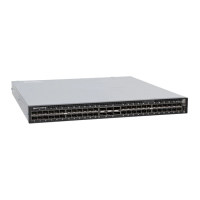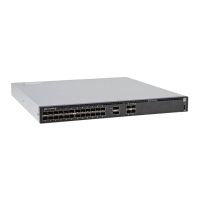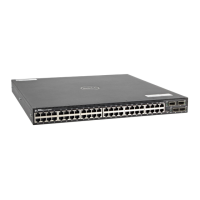100 Inactive U Te 1/1
101 Inactive T Te 1/1
103 Inactive M Te 1/1
Debugging VLAN Stacking
To debug VLAN stacking, use the following command.
• Debug the internal state and membership of a VLAN and its ports.
debug member
Example of Debugging a VLAN and its Ports
The port notations are as follows:
• MT — stacked trunk
• MU — stacked access port
• T — 802.1Q trunk port
• U — 802.1Q access port
• NU — Native VLAN (untagged)
Dell# debug member vlan 603
vlan id : 603
ports : Te 2/4 (MT), Te 3/1(MU), Te 3/25(MT), Te 3/26(MT), Te 3/27(MU)
Dell#debug member port tengigabitethernet 2/4
vlan id : 603 (MT), 100(T), 101(NU)
Dell#
VLAN Stacking in Multi-Vendor Networks
The first field in the VLAN tag is the tag protocol identifier (TPID), which is 2 bytes. In a VLAN-stacking
network, after the frame is double tagged, the outer tag TPID must match the TPID of the next-hop system.
While 802.1Q requires that the inner tag TPID is 0x8100, it does not require a specific value for the outer tag
TPID. Systems may use any 2-byte value; Dell Networking OS uses 0x9100 (shown in the following) while
non-Dell Networking systems might use a different value.
If the next-hop system’s TPID does not match the outer-tag TPID of the incoming frame, the system drops
the frame. For example, as shown in the following, the frame originating from Building A is tagged VLAN RED,
and then double-tagged VLAN PURPLE on egress at R4. The TPID on the outer tag is 0x9100. R2’s TPID must
also be 0x9100, and it is, so R2 forwards the frame.
Given the matching-TPID requirement, there are limitations when you employ Dell Networking systems at
network edges, at which, frames are either double tagged on ingress (R4) or the outer tag is removed on
egress (R3).
VLAN Stacking
The default TPID for the outer VLAN tag is 0x9100. The system allows you to configure both bytes of the 2
byte TPID.
Previous versions allowed you to configure the first byte only, and thus, the systems did not differentiate
between TPIDs with a common first byte. For example, 0x8100 and any other TPID beginning with 0x81 were
Service Provider Bridging 952
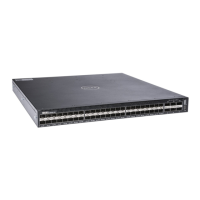
